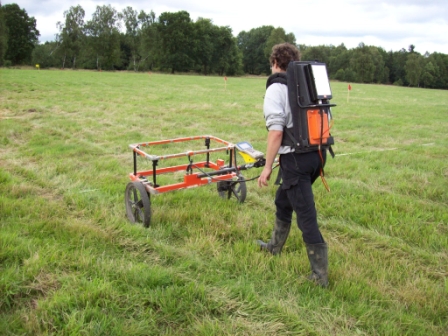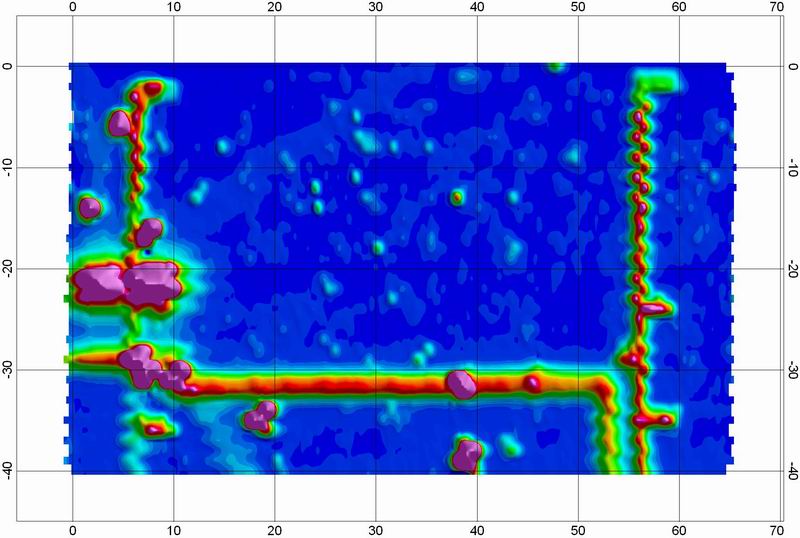
Electromagnetics
Electromagnetic methods are used to determine electric conductivity of the subsurface. There are two-coil systems and time-domain systems (transient electromagnetics).
Depth of penetration: (dependent on measurement method) 2 m up to 400 m

Sample applications:
- Detection and demarcation of old hidden waste sites
- Tracing of fissures and fault zones in bedrock
- Survey and monitoring of pollutant dispersals (plumes)
- Detection of buried metallic objects (drums, barrels, containers)
- Detection of near surface pipe and cable service lines as well as hidden fundaments in industrial brownfields
- Detection of ammunition and UXO (unexploded ordnance)In field surveys the areas or profiles are placed in lines using the particular two-coil system. Depending on the operating system one or two technicians are needed. One big advantage of many electromagnetic methods is a low manpower and a high measurement progress (sometimes up to several kilometers a day)

In field surveys the areas or profiles are placed in lines using the particular two-coil system. Depending on the operating system one or two technicians are needed. One big advantage of many electromagnetic methods is a low manpower and a high measurement progress (sometimes up to several kilometers a day).
For interpretation conductivity data is displayed in colours. The illustration shows the result of a successful pipeline exploration. The pipeline (highlighted in red) emerges clearly in the measured area.